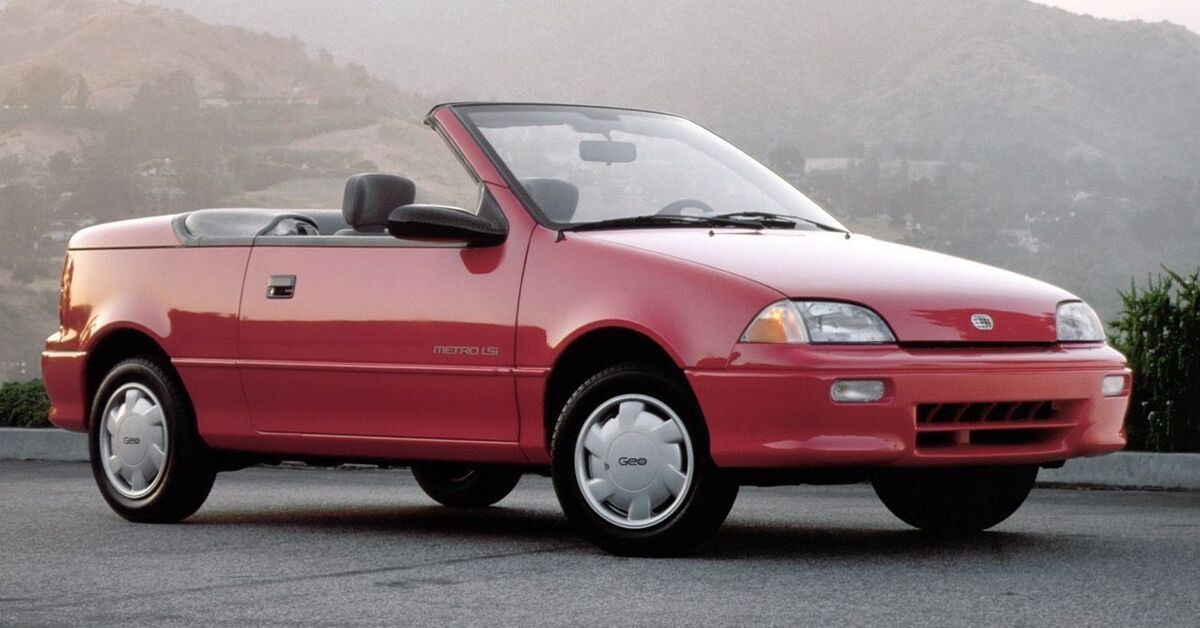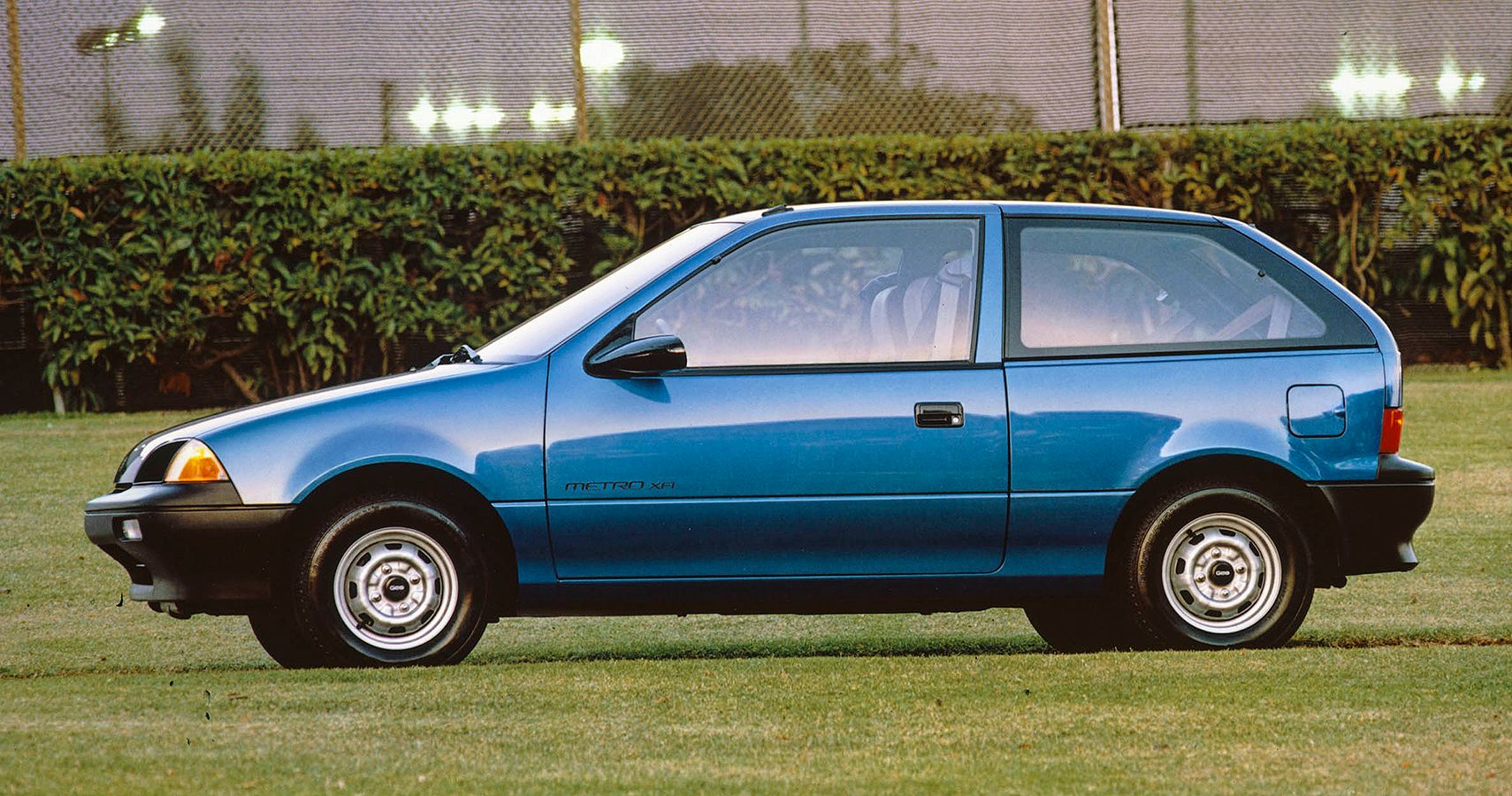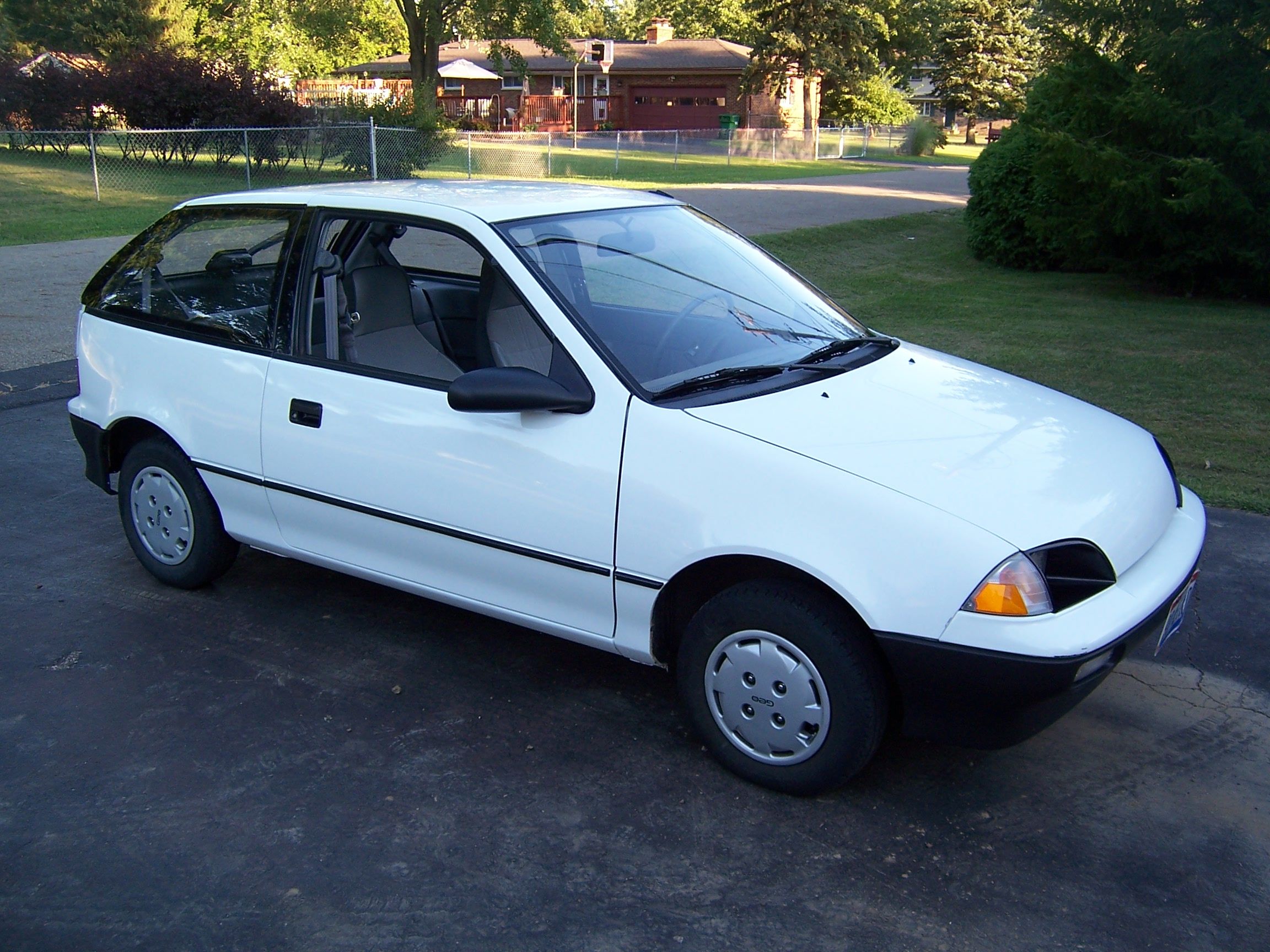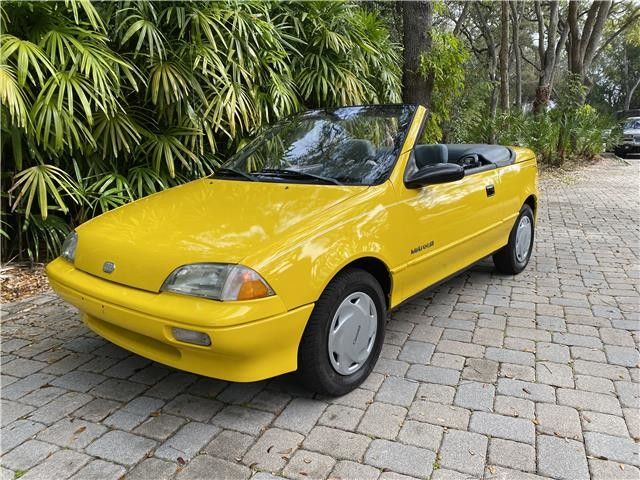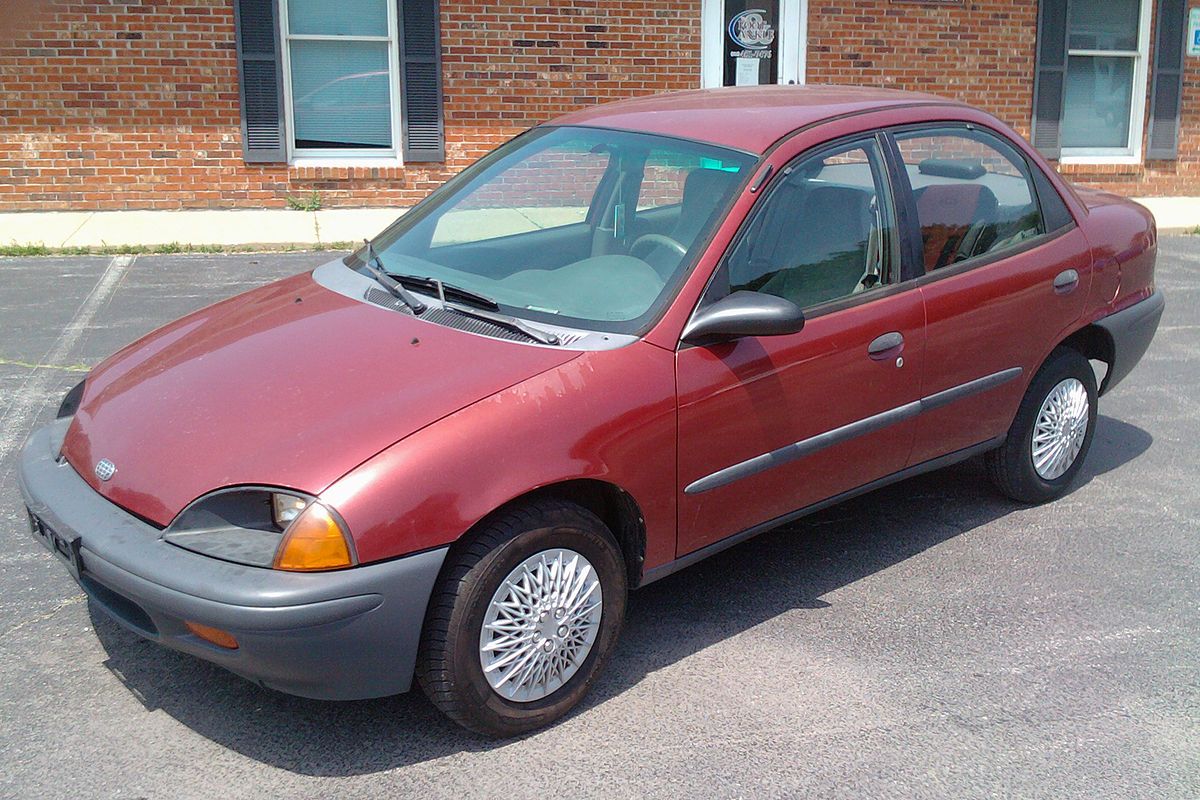By the late 80s, many of GM’s cars were badge-engineered imports from other companies. Cars like the once powerful Chevy Nova were rebadged Toyota Corollas by 1985. GM’s partnerships with other car companies were doing a great job in sales and were also doing well with brand recognition.
But for many consumers, it was obvious which cars in GM’s lineup weren’t truly American GM cars. The previously mentioned Chevy Nova, Sprint, Spectrum, and the Chevy LUV had all been well-received cars for GM, but in quality, design, and feel, they did not line up with the rest of the Chevrolet lineup.
Enter The Geo
In response to popularizing these badge-engineered imports, GM created a whole new brand called Geo. With some clever marketing telling customers to “Get To Know Geo”, this subbrand of GM aimed to import cars for the American domestic market.
Geo offered a handful of vehicles throughout its short life in the US including the Geo Tracker, which was a rebadged Suzuki Sidekick, and the Geo Storm, a sports coupe based on the Isuzu Impulse. However, the most recognizable Geo ever produced both on the road and in pop culture was the Geo Metro.
“Getting To Know Geo”
The Geo Metro was introduced in 1989 and it was simply a rebadged Suzuki Cultus. Throughout these early years, Suzuki also sold the Metro under their own name, the Suzuki Swift.
While the car didn’t break any sales records, it was gaining some ground in the automotive mainstream due to its unbelievable fuel economy.
The Geo Metro was only offered with a 3-cylinder engine producing an extremely wimpy 55 HP when it was new. This meant that the car was barely fit for American roads, and could be dangerous if you needed to merge quickly. But that tiny 3-cylinder engine, combined with a manual transmission and a curb weight that would be illegal today meant the little Metro was getting a combined 47 MPG out of the XFI model: one of the highest MPG ratings of all time.
Step Aside, Smart Car
The Geo Metro wasn’t only a fuel sipper, but a decently comfortable one as well. While the interior was full of cheap plastic, AC was available, and it comfortably sat four. Even with a Geo full of your friends, you had a spacious hatchback to haul around your things as well.
The Geo may have been slow, but MPG was not its only goal, it was still a car first before anything else. Not created for fuel-efficiency novelty, but to be a family car as well.
The Metro was even offered in a convertible option as well. While this variant only had two seats available, it offered a top-down experience for anyone. This Metro convertible was one of the cheapest convertibles ever sold, and while the fuel economy wasn’t as wonderful for the convertible top, drivers could still expect a reasonable 37 combined MPG.
The Second-Generation Metro Got Curvy
The Geo Metro sold well enough in its first generation to earn a facelift in 1995. This redesign threw out the old Metro’s blocky interiors and sharp edges for a very 1990s curvy design. This generation of Metros ditched the convertible option for a new sedan option in the US to be sold alongside the hatchback.
This Metro generation took more design cues from other Chevrolets in GM’s lineup, tying the Geo and Chevy brand closer together in style.
The End Of The Metro
By the late 90s, the Geo brand had run its course. With GM’s lineup inflating with Chevy, Buick, Pontiac, Saturn, Cadillac, Oldsmobile, GMC, and Geo all fighting for customers, Chevy took on the final years of Geo production.
After 1997, the Geo Metro became the Chevy Metro, and while it did get a few more years of production, 2001 was the end of the Metro. The last Metro ever produced was a red sedan that rolled off the line on April 27th, 2001.
The Legacy Of The Little Geo That Could
While many have forgotten about the little Geo Metro, it continues to be a fuel economy icon in the United States. In 2008, the Geo Metro saw a rebirth in the mainstream US car culture. As gas soared above $4 a gallon in many midwestern states, the Geo Metro resale market value went through the roof. Many Geo owners were able to sell their Geos for a huge profit, much more than what the car was worth, due to its credibility as a fuel sipper.
While many see the Metro as the punchline for every slow car joke ever made, it has a significant part in automotive history. Geos are driven today by their original owners, purists who work to keep their cars looking brand new, as well as Metro enthusiasts who modify their cars like any other tuners would.
While we have moved on, it is good to take a look back at a time when safety standards were a little less strict, 55 HP was good enough, 50+ MPG was possible without a hybrid engine, and the Geo Metro showcased all of that perfectly.

